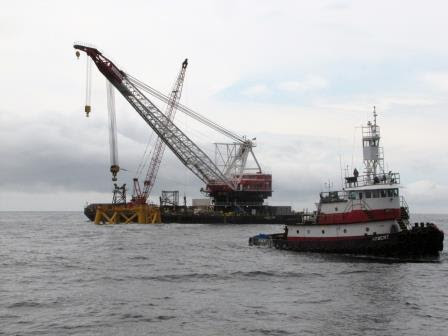 The Bureau of Ocean Energy Management (BOEM) has begun a new study to conduct real-time, independent observations and data collection during construction of offshore wind turbines.
The Bureau of Ocean Energy Management (BOEM) has begun a new study to conduct real-time, independent observations and data collection during construction of offshore wind turbines.
According to BOEM, field work took place in August and September through the Real-Time Opportunity for Development Environmental Observations (RODEO) study, which is taking direct measurements of visual effects, sound produced by various activities, and seafloor disturbances caused by cabling or anchoring. It is also evaluating different types of monitoring equipment.
Beginning with Rhode Island's Block Island project, the study will be ongoing during the next five years and will take measurements from projects as they come online. Field work at future projects may include evaluation of air emissions and testing of mitigation measures. These monitoring efforts could take place in state or federal waters.
According to BOEM, RODEO offers a new opportunity to learn from data gathered from actual construction instead of best-guess scenarios and will help the agency establish realistic mitigation measures that reduce or eliminate impacts.
Given that there is no previous offshore wind construction experience in the U.S., the analyses and subsequent mitigation measures are based on the best available science. Future analyses will benefit from real-time, independent observations during actual construction activities.
For example, the extent of disturbance on the seafloor from anchors may be estimated to encompass a larger area than what actually occurs. Recovery from the disturbance may occur in less than a year or may take longer. Vessels may use dynamic positioning, resulting in no disturbance from anchoring.
The first component completed for this study was development of a field plan for measurements at the Block Island Wind Farm during the installation of the foundations. The second task involves the testing of scour monitoring equipment on one foundation at Block Island's wind facility for up to one year.
The third task has researchers recording activities as they occur, monitoring sound in the air and water during pile driving, and evaluating scour from anchors and other activities.
Pictured: During summer 2015, more than a dozen construction and transport barges, tugboats, crew ships, and monitoring vessels were active at the Block Island Wind Farm site. Photo courtesy of Tracey Moriarty, BOEM.



